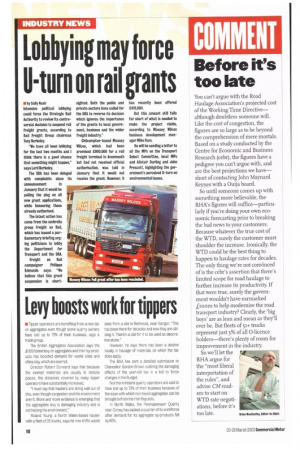COMMENT
Page 10

If you've noticed an error in this article please click here to report it so we can fix it.
Before it's too late
You can't argue with the Road Haulage Association's projected cost of the Working Time Directive— although doubtless someone will. Like the cost of congestion, the figures are so large as to be beyond the comprehension of mere mortals. Based on a study conducted by the Centre for Economic and Business Research (cebr), the figures have a pedigree you can't argue with, and are the best projections we have— short of contacting John Maynard Keynes with a Ouija board.
So until someone comes up with something more believable, the RHA's figures will suffice—particularly if you're doing your own economic forecasting prior to breaking the bad news to your customers. Because whatever the true cost of the WTD, surely the customer must shoulder the increase. Ironically, the WTD could be the best thing to happen to haulage rates for decades. The only thing we're not convinced of is the cebr's assertion that there's limited scope for road haulage to further increase its productivity If that were true, surely the government wouldn't have earmarked Lioom to help modernise the road transport industry? Clearly, the 'big boys' are as lean and mean as they'll ever be. But fleets of 51+ trucks represent just 3% of all 0-licence holders—there's plenty of room for improvement in the industry.
So we'll let the RHA argue for the "most liberal interpretation of the rules", and advise CM readers to start on wm rate negotiations, before it's too late.








































































































































































